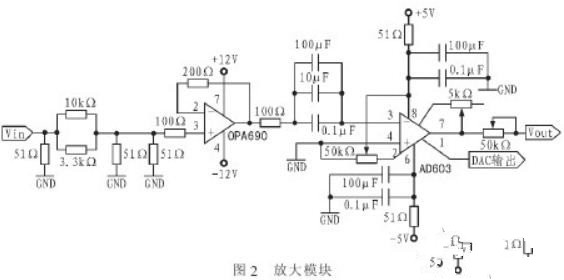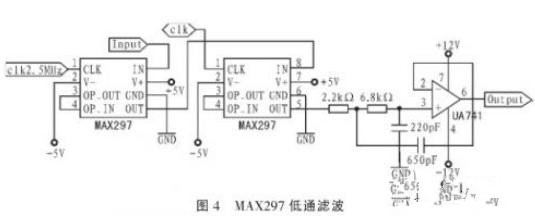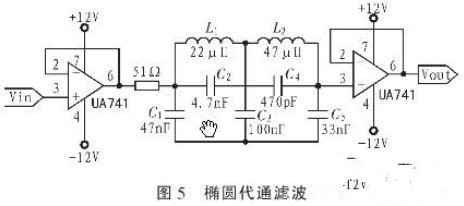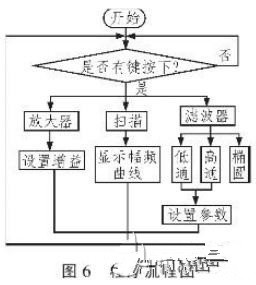|
The OP
Published on 2019-9-19 20:43
Only look at the author
This post is from Microcontroller MCU
| ||
|
|
||
- 【Posts】Design of filter module based on combination of single chip microcomputer and FPGA
- 【Posts】Field Programmable Gate Array is...? ?
- 【Posts】[Renesas RA8D1 development board, graphics MCU evaluation based on M85 core] + camera and display combination
- 【Posts】[Industrial-grade intelligent control MCU D133CBS] 5- Use RTT-software package combined with IIC to read BH1750
- 【Posts】Wireless charging solution "XS016 fully integrated MCU + micro IPM architecture"
- 【Posts】Sampling rate of MCU ADC
- 【Posts】TI enters the M0 MCU camp. What is it up to?
- 【Posts】The microcontroller outputs PWM wave to control the load supply voltage 0-12V adjustable
- 【Download】Configuration of Field Programmable Gate Array Based on Single Chip Microcomputer
- 【Download】AT6000 Field Programmable Gate Array (FPGA) connected to a microcontroller can control and change its own configuration
- 【Download】MK_Field Programmable Gate Array Device FPGA Principle and Application Design 240 pages 11.0M.pdf
- 【Download】Chaotic digital communication system based on field programmable gate array technology——design and implementation
- 【Download】《Microcontroller C language modular programming》
- 【Download】\"PIC16 series single chip C programming and PROTEUS simulation\" full version
- 【Download】NXP KW41 Microcontroller Design Competition Portfolio
- 【Download】Single chip microcomputer hardware circuit design
- 【Design】MRB-KW0x: Modular reference design board for Kinetis KW0x series MCUs
- 【Design】RDR-961 - 60 W power supply with InnoSwitch4-Pro PowiGaN, ClampZero and Microchip microcontrollers with ZVS and 5-20 V programmable output
- 【Design】Intelligent 4.3-inch programmable touch display based on STM32F407ZG microcontroller
- 【Design】QuickLogic EOS S3: For next-generation low-power embedded machine learning applications, FPGA + low-power MCU open source expansion board
- 【Design】FPGA+MCU comprehensive development board
- 【Design】PC accessory SDRAM module controller based on LPC860 MCU
- 【Circuits】IR2130 combined with microcontroller and SLE4520 for three-phase frequency conversion system diagram
- 【Circuits】Interface circuit design of SPCE061A microcontroller and fingerprint identification module
- 【Circuits】Module circuit design of telephone remote control system based on single-chip microcomputer
- 【Circuits】Application of DC boost module AH812 in single chip microcomputer system
- 【Circuits】How to Design a Fan Cooling System Using a Microcontroller
- 【Circuits】How to design an ESP32-based microcontroller development board
- 【Articles】Configuration of Field Programmable Gate Array Based on Single Chip Microcomputer
- 【Articles】Research on Power Supply Design for Large-Scale Field Programmable Gate Array (FPGA) Development System
- 【Articles】The Structure and Design of Field Programmable Gate Array
- 【Articles】Design of Digital Control Delay Device Based on Field Programmable Gate Array
- 【Articles】Frequency meter realized by field programmable gate array
- 【Articles】Large-scale Field Programmable Gate Array (FPGA) development system power supply design
-
[Renesas RA8D1 development board, graphics MCU evaluation based on M85 core] + camera and display combination
LasttimewetestedthecamerathroughthedevelopmentboardWeaddourRGBLCDconfigurationonthebasisofthecameraInitializethekeypinsandsettherelevantconfigurations.Weallknowthatthecameradataisstoredinthememory,sowejustneedtofindtherelevantmemorydataandr ...
-
Design and implementation of 3D wireless RF mouse based on single chip microcomputer and touch control module
Asabasiccomponentofacomputer,themouseplaysanimportantroleTraditionalmice,whetherwiredorwireless,areeitherconstrainedbycablesorrelyondesktopsandothercarriersduetothecontrolprincipleadopted,andtheirapplicableoccasionsandscopearelimitedAtthist ...
-
DIY a pocket experimental power supply
ExperimentalpowersupplyisoneofthemostbasictoolsforelectronicDIYAsapowersupplyforamateurDIY,therearemanyoccasionsfordemand,whichcannotbecoveredbyasinglepowersupplyIoftenneedacompactpowersupply. WhenIwasinjuniorhighschool,Ihadoneortwoa ...
- [V2S200D Voice Vibration Sensor Evaluation Kit Review] Review Summary
- [V2S200D Voice Vibration Sensor Evaluation Kit Review] Audacity Tool Test
- The relationship between FPGA memories
- How to choose a wireless communication module with long distance and fast speed?
- Survival rules for electronic engineers in the workplace, every word is true!
- [Project source code] [Modelsim FAQ] No error but always shows Loading
- Please help me with the serial port problem of msp430f6638
EEWorld Datasheet Technical Support
-
"Cross-chip" quantum entanglement helps build more powerful quantum computing capabilities
IBM scientists have achieved "cross-chip" quantum entanglement - successfully entangled two "Eagl
-
Ultrasound patch can continuously and noninvasively monitor blood pressure
A research team at the University of California, San Diego, has developed an innovative wearable
-
Europe's three largest chip giants re-examine their supply chains
At the Electronica 2024 CEO Roundtable held just last week, the CEOs of three chip giants, Infine
- It is reported that Kioxia will be approved for listing as early as tomorrow, and its market value is expected to reach 750 billion yen
- The US government finalizes a $1.5 billion CHIPS Act subsidy to GlobalFoundries to support the latter's expansion of production capacity in the US
- SK Hynix announces mass production of the world's highest 321-layer 1Tb TLC 4D NAND flash memory, plans to ship it in the first half of 2025
- UWB is a new way to use it in cars. Can wireless BMS also use it?
- Filling the domestic gap! China Mobile, Huawei and others jointly released the first GSE DPU chip
- Samsung Electronics NRD-K Semiconductor R&D Complex to import ASML High NA EUV lithography equipment
- Apple reveals the secret of its own chip success: competitors can't use the latest cutting-edge technology
- Problems with STM32 and passive buzzer playing sound
- Embedded Tutorial_DSP Technology_DSP Experiment Box Operation Tutorial: 2-28 Building a Lightweight WEB Server Experiment
- OPA847IDBVR op amp domestic replacement
- AG32VF407 Test UART
- [Digi-Key Follow Me Issue 2] Chapter 1: Sharing on receiving the goods
- What model is this infrared receiver? Which model can be used instead? Thank you
- Selling brand new unopened ZYNQ 7Z020 FPGA core board
- The LORA module used in the lithium battery-powered water meter setting can save energy when 100 water meters are installed in one corridor.
- I would like to ask, when a port is set to RX0, is it necessary to set the input and output direction of this port?
- Why is this year so difficult? It’s even more difficult than during the pandemic. I’m 30 and facing unemployment. I’m so confused.
- Ask about the voltage regulator test question
- [Xiaohua HC32F448 Review] About Xiaohua Semiconductor's UART interrupt sending and PRINTF construction and redirection
- 【BIGTREETECH PI development board】 HDMI output test
- 【BIGTREETECH PI development board】+08. Audio test (zmj)
- [Xiaohua HC32F448 Review] +RTC electronic clock
- 有奖直播报名| 高可靠性IGBT新选择 —— 安世半导体650V IGBT
- 【直播时间】12月19日(周四)下午15:00-16:30
【直播好礼】定制双肩商务包、30元京东卡、吸管玻璃杯
- 安世半导体直播报名中
- 直播主题:安世半导体理想二极管与负载开关,保障物联网应用的稳健高效运行
直播时间:12月17日(周二)下午14:00
报名就有机会获得:定制双肩商务包、30元京东卡、吸管玻璃杯
- PI 电源小课堂 | 无 DC-DC 变换实现多路高精度输出反激电源
- 时间:即日起-12月15日
看视频学习电源干货,答题赢取京东卡!
- 参会有好礼 | 2024 瑞萨电子MCU/MPU工业技术研讨会
- 深圳站:11月30日(周六)深圳湾万怡酒店
上海站:12月06日(周五)上海喜玛拉雅酒店
奖励设置:现金红包、螺丝刀套装或30元京东卡
- Littelfuse 新品赋能电子产品安全可靠并高效, 10+挑战等你探索!
- Littelfuse 应用赋能星球,覆盖了诸多应用痛点及解决办法,邀请工程师一起探索,解锁更多设计力!
- 下载资料赢好礼!看Vicor模块化电源解决方案如何推动创新
- 活动时间:即日起-2024年12月31日
如何参与:点击活动页内您想了解的模块,找到资料下载即可参与抽奖,活动结束后统一发奖!
- 有奖活动|英飞凌高密度双相电源模块为高性能运算平台而生
- 活动时间:即日起-12月15日
活动奖励:蓝牙音箱、氮化镓充电器套装、黑色小背包
- 本周精选下载推荐:电源管理基础Dummies
- 本周小编给大家带来一本超简单、超干货的电子书——《电源管理基础Dummies》!内容深入浅出,排版舒服简洁,分分钟能get到电源管理最核心的知识内容。
EEWorld
subscription
account

EEWorld
service
account

Automotive
development
circle

About Us Customer Service Contact Information Datasheet Sitemap LatestNews
- I want to get started with 51 single-chip microcomputer c, what should I do?
- I want to get started with deep learning as an AI engineer, what should I do?
- I want to get started with Allegro PCB, what should I do?
- How to get started with 32 MCU programming? Please give me a learning outline
- Please recommend some introductory tutorials for kea microcontrollers
- For the introduction of PCB board drawing, please give a learning outline
- For the basic introduction of SMT technicians, please give a learning outline
- Please give a study outline for the introduction to the mathematical foundations of machine learning
- How to get started with 32 MCU
- How many months does it take to get started with PCB design?


 Room 1530, Zhongguancun MOOC Times Building,
Block B, 18 Zhongguancun Street, Haidian District,
Beijing 100190, China
Tel:(010)82350740
Postcode:100190
Room 1530, Zhongguancun MOOC Times Building,
Block B, 18 Zhongguancun Street, Haidian District,
Beijing 100190, China
Tel:(010)82350740
Postcode:100190
 京公网安备 11010802033920号
京公网安备 11010802033920号








 提升卡
提升卡 变色卡
变色卡 千斤顶
千斤顶